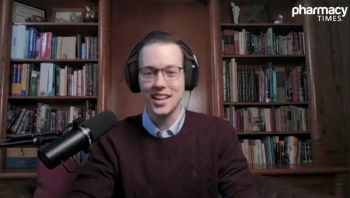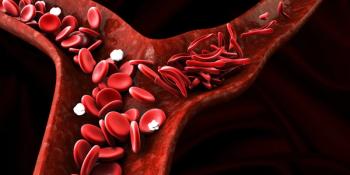
- March 2018 HPV Vaccination Supplement
- Volume 84
- Issue 3
Dialogue and Education: Engaging Young Adults on the HPV Vaccine
Vaccinations are often given to protect populations whose immune systems are most vulnerable, but pharmacists are aware that some vaccinations are also important during the adolescent and young-adult years.
Vaccinations are often given to protect populations whose immune systems are most vulnerable, but pharmacists are aware that some vaccinations are also important during the adolescent and young adult years. These include tetanus/diphtheria/pertussis, meningococcal, and human papillomavirus (HPV). Unfortunately, due to misinformation, confusion, lack of consistent medical care, and other barriers, these vaccines may not be obtained. One particular vaccine that continues to need attention is the HPV vaccine.
What is HPV?
HPV is the most common sexually transmitted disease in the United States, with 79 million active cases and an estimated 14 million new infections each year.1,2 Sexually active individuals are at an estimated 50% lifetime risk of being infected.3 Transmission is through vaginal, anal, or oral sexual contact.
There are approximately 120 types of HPV.4 Low-risk strains are responsible for the presence of genital warts, and high-risk strains are found in cancers of the cervix, vulva, vagina, penis, anus and oropharyngeal areas.4 In many cases, HPV can clear from the body on its own without causing any health concerns.
Importantly, there is no cure and no screening test for HPV. Many people will not know they have been infected until signs and symptoms occur.2,5
Why Focus on Young Adults?
Since the introduction of an HPV vaccine in 2006, there has been confusion and misinformation regarding its utility and benefits. Coloring the public view were questions about the recommended age for vaccine administration (11 or 12 years) as well as the potential implications for wider use, specifically whether recommending the vaccine amounts to consent from providers for children to have sexual contact.
Although the impact of these factors on the use of the vaccine cannot be measured, overall rates of coverage remain low. In 2014, only 40.2% of women 19 to 26 years of age reported obtaining 1 or more doses of the vaccine, while 13.3% of men 19 to 21 years of age had received at least 1 dose of the series.6 Of the 14 million new cases of HPV every year, 50% occur in individuals 15 to 24 years of age.3 The HPV vaccine series is indicated in females 9 to 26 years of age and in males 9 to 21 years of age. There is an additional recommendation for males up to 26 years of age if they are at high risk. Current recommendations call for a 2-dose series for individuals 9 to 14 years of age and a 3-dose series for individuals 15 to 26 years of age.7
Opening the Dialogue
A good way to open the dialogue with existing patients in the pharmacy is through an immunization update program. All patients who come into the pharmacy should be assessed for any immunization needs. Talk to patients about which vaccines they have received and then focus on the potential needs for vaccines based on age and risk factors. This process may be initially time consuming for the pharmacist, but creating a “vaccine of the month” program could help minimize the time demands. For example, if the HPV vaccine were “vaccine of the month,” any patient between the ages of 11 and 26 years would be assessed during that month. Over time, this program would become less demanding and help open the dialogue with potential patients.
The most difficult aspect of starting a conversation with a young adult is making that initial contact. Young adults in their late teens and early twenties tend to be healthy individuals, so it often is not as simple as waiting for them to walk into the pharmacy to pick up a prescription. Working together with other healthcare professionals or community groups may represent a way to bridge the gap. Collaborating with college wellness centers is an effective way to work with other healthcare professionals. Since wellness centers see a number of these students, they could identify students who have not been vaccinated and start to educate these students regarding the importance of the vaccine. If they are able, they can also provide the first vaccine in the series. As the pharmacist, you could assist them with the education process and provide the vaccination if the wellness center cannot, or offer to follow up and complete the series with the student. Setting up an information table at a campus or community event is another way to start sharing information and open a dialogue that could result in this population coming to your pharmacy for further education or to obtain the vaccine.
Education is Critical
Due to past confusion and misinformation about the HPV vaccine, it is essential to educate young adults and help answer any questions they may have regarding the disease and the vaccine. It often takes more than one interaction with a patient before they agree to the vaccine, therefore providing education is an important first step. Find out what the patient knows about HPV and then fill in the gaps. Then, provide educational materials and encourage the patient to learn more about HPV and the vaccine.
Young adults often believe that if they are engaging in safe sexual practices, they do not need the vaccine. The best ways to prevent HPV are to get vaccinated, use latex condoms during sexual contact, and be in a monogamous relationship.2 An important consideration for patients is that although they may be engaging in safe sex practices, there may be a time in the future when they will not use condoms, such as when they or their partner are trying to get pregnant. If either partner is infected with HPV, the disease could be spread at that time.
The most common questions regarding the vaccine are how well it protects patients and whether it is safe. The HPV vaccine has been shown highly effective in preventing cancers related to common strains of HPV, with 98% to 100% efficacy against cervical, vulvar, and vaginal cancer, 75% efficacy against anal cancer, and 89% and 99% efficacy against genital warts in males and females, respectively.8 Overall, the vaccine has been found to be safe.9 The most common adverse reactions include injection site reactions such as pain, redness, and swelling. Headaches may also occur after the vaccination.2
It is important when educating teens and young adults for pharmacists to ensure that patients have received all doses in the series. The recommendation for a 2-dose series for those 9 to 14 years of age was only recently incorporated into the immunization recommendations (in 2015). Of note, a third dose is required if the second dose was obtained less than 5 months from the first dose.4 This adds to the complexity of dosing and highlights why it is vital to discuss with patients the number of doses as well as when those doses were received. The series does not need to be restarted if the previous doses were received at an earlier age, but completing the series is important to reach the efficacy levels previously discussed.
Conclusion
Young adults in their late teens to early twenties are at a point where they make their own decisions about their healthcare. This age is an important time for patients to make decisions about the HPV vaccine if they have not already received the series. Pharmacists have a significant opportunity to identify those young adults who either have not started the series, or who may have started and need to complete the series. Opening a dialogue and educating these individuals on the importance of protecting themselves is critical.
Sheri Stensland, PharmD, AE-C, FAPhA, is an associate professor of pharmacy at Midwestern University-Chicago College of Pharmacy in Downers Grover, Illinois.
References
- Satterwhite CL, Torrone E, Meites E, et al. Sexually transmitted infections among US women and men: Prevalence and incidence estimates, 2008. Sex Transm Dis 40(3):187—93. 2013.
- Genital HPV Infection — CDC Fact Sheet. https://www.cdc.gov/std/hpv/stdfact-hpv.htm. Accessed February 9, 2018.
- National Foundation for Infectious Diseases. HPV (human papillomavirus). NFID website. http://www.adultvaccination.org/vpd/hpv. Accessed February 9, 2018.
- The Center for Disease Control and Prevention. HPV vaccine information for clinicians. CDC website. https://www.cdc.gov/hpv/hcp/need-to-know.pdf. Accessed February 12, 2018.
- The National Foundation for Infectious Diseases. Facts about human papillomavirus (HPV) for adults. NFID website. http://www.adultvaccination.org/vpd/hpv/facts-about-hpv-adults.html. Accessed February 16, 2018.
- The Center for Disease Control and Prevention. Morbidity and mortality weekly report: Surveillance Summaries / February 5, 2016 / 65(1);1—36. CDC website. https://www.cdc.gov/mmwr/volumes/65/ss/ss6501a1.htm. Accessed February 2, 2018.
- The Center for Disease Control and Prevention. Prevalence of HPV in adults aged 18-69: United States, 2011-2014. CDC website. https://www.cdc.gov/nchs/products/databriefs/db280.htm Accessed February 2, 2018.
- Efficacy of Gardasil 9. https://www.merckvaccines.com/Products/Gardasil9/efficacy. Accessed February 2, 2018.
- The Center for Disease Control and Prevention. HPV vaccination recommendations. CDC website. https://www.cdc.gov/vaccines/vpd/hpv/hcp/recommendations.html. Accessed February 9, 2018.
Articles in this issue
almost 8 years ago
The Path Ahead for the HPV Vaccinealmost 8 years ago
Making HPV Vaccination Affordable for Patientsalmost 8 years ago
Year-Round Solutions Beyond the Influenza Seasonalmost 8 years ago
Patient Communication Strategies for Boosting HPV Vaccination Coveragealmost 8 years ago
HPV Vaccination in Young Adults: Are We Doing Enough?almost 8 years ago
The 9-Valent HPV Recombinant Vaccine: An IntroductionNewsletter
Stay informed on drug updates, treatment guidelines, and pharmacy practice trends—subscribe to Pharmacy Times for weekly clinical insights.

















































































































































































































